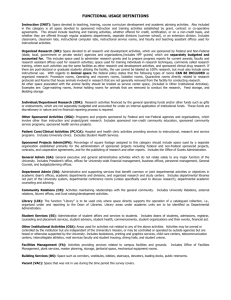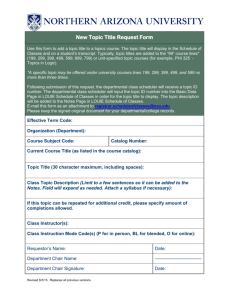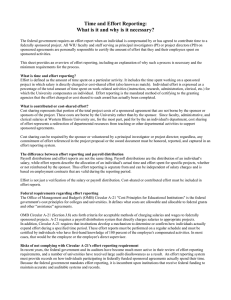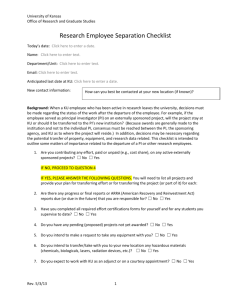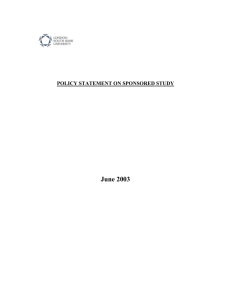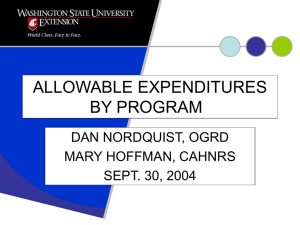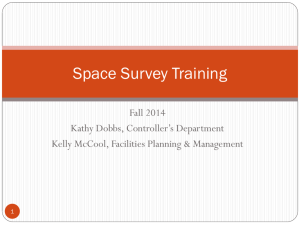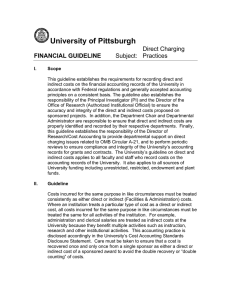Space Survey Checklist - Accounting & Financial Services @ UC
advertisement
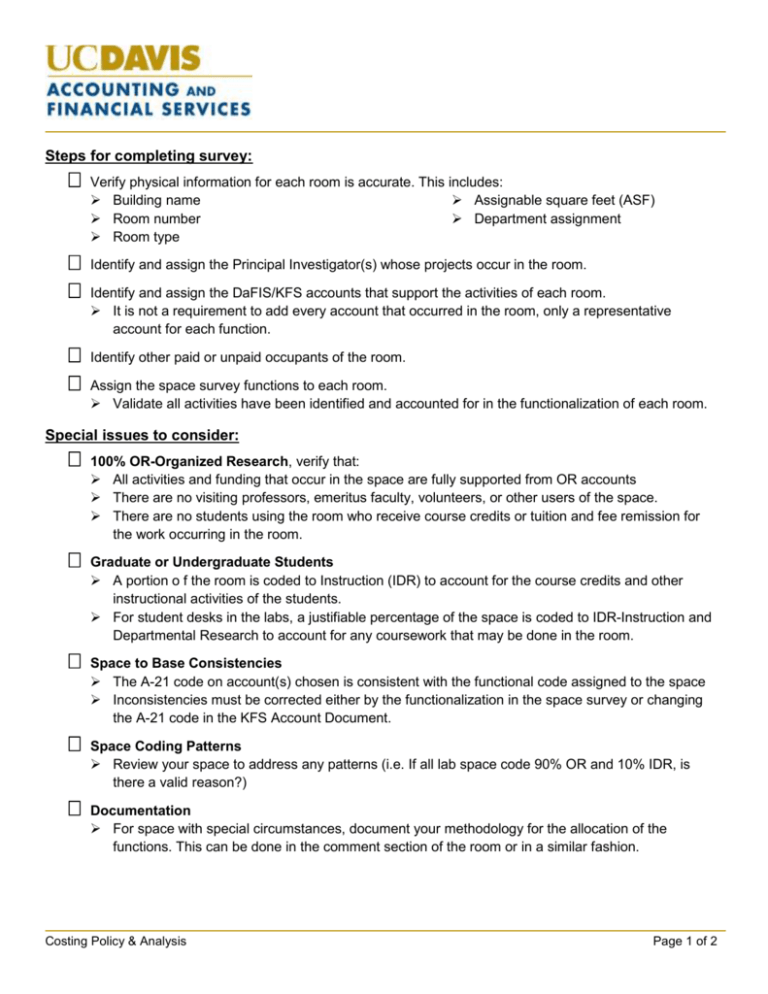
Steps for completing survey: Verify physical information for each room is accurate. This includes: Building name Assignable square feet (ASF) Room number Department assignment Room type Identify and assign the Principal Investigator(s) whose projects occur in the room. Identify and assign the DaFIS/KFS accounts that support the activities of each room. It is not a requirement to add every account that occurred in the room, only a representative account for each function. Identify other paid or unpaid occupants of the room. Assign the space survey functions to each room. Validate all activities have been identified and accounted for in the functionalization of each room. Special issues to consider: 100% OR-Organized Research, verify that: All activities and funding that occur in the space are fully supported from OR accounts There are no visiting professors, emeritus faculty, volunteers, or other users of the space. There are no students using the room who receive course credits or tuition and fee remission for the work occurring in the room. Graduate or Undergraduate Students A portion o f the room is coded to Instruction (IDR) to account for the course credits and other instructional activities of the students. For student desks in the labs, a justifiable percentage of the space is coded to IDR-Instruction and Departmental Research to account for any coursework that may be done in the room. Space to Base Consistencies The A-21 code on account(s) chosen is consistent with the functional code assigned to the space Inconsistencies must be corrected either by the functionalization in the space survey or changing the A-21 code in the KFS Account Document. Space Coding Patterns Review your space to address any patterns (i.e. If all lab space code 90% OR and 10% IDR, is there a valid reason?) Documentation For space with special circumstances, document your methodology for the allocation of the functions. This can be done in the comment section of the room or in a similar fashion. Costing Policy & Analysis Page 1 of 2 Space Survey Functions: Organized Research (OR) Instruction and Department Research (IDR) All research and development activities of the University that are separately budgeted and accounted for on a specific project basis, including related cost sharing. It includes: Sponsored research projects (funded externally by federal government & non-federal sponsors) University research projects (separately budgeted & accounted for on a project-by-project basis) Sponsored research training (training of individuals in research techniques) Cost sharing associated with sponsored research (university financial support for faculty & staff effort) Non-sponsored research No formal application/approval process required Includes research funded by gifts, endowments, seed funding, start-up funding, and indirect cost recovery money Teaching and training activities, whether they are offered for credit toward a degree or certificate or on a non-credit basis, either through regular academic departments or separate divisions, such as a summer school • Other Sponsored Activities (OSA) Includes fellowships and instruction training grants (Sponsored Instruction) Externally funded programs OTHER than: Service/Recharge Center (SC) Space occupied by recharge activities selling or recharging goods or services to other campus departments Departmental Administration (DA) Renovation/Vacant (REN) Costing Policy & Analysis Instruction/Departmental Research (IDR) Organized Research (OR) Other Sponsored Activities (OSA) Includes: Examples: Machine Shop, Chemical Supply Room, DNA Sequencing Facility, Microscopy, etc. Activities that are not classified as: Instruction Sponsored Research Involve the performance of work (both federal & non-federal) other than research and instruction Includes fee-for-service activities, community service programs, seminars, symposiums, and conferences, clinical trials, etc. Includes activities supported by cost sharing Other Institutional Activities (OIA) Student credit hours for lab work, thesis development, or other instructional activities Space used by outside parties or agencies Visiting faculty or scientists not paid by the University and emeritus professors Auxiliary activities (e.g. housing, athletics, bookstore, dining facilities, etc.) Fundraising activities (e.g. alumni affairs, public relations, marketing, development, etc.) Used for academic administrative and supportive activities that benefit common or joint departmental objectives Includes academic department space that is not practical to define to any function because it is used by many individuals (e.g., office service rooms, lounges, departmental libraries, conference rooms, secretary/clerical offices, and office storage areas) Also takes place in offices of deans, chairpersons, center directors, division heads, and business officers Assignable to a department, but space that is CURRENTLY under renovation or not in use for the entire 12 months Page 2 of 2


